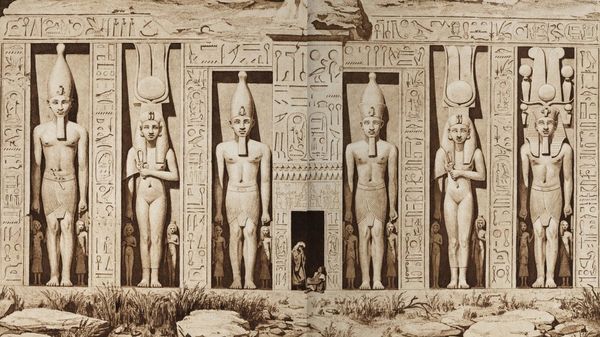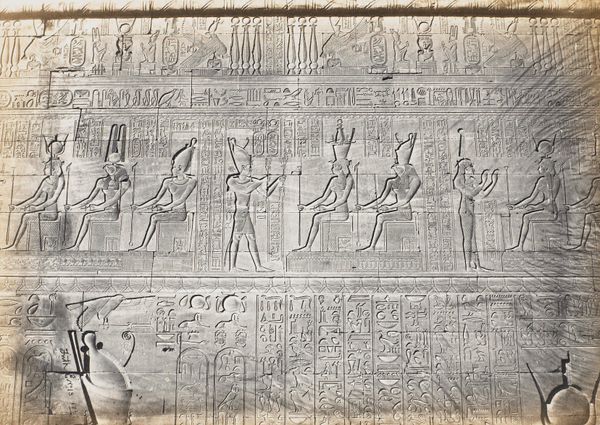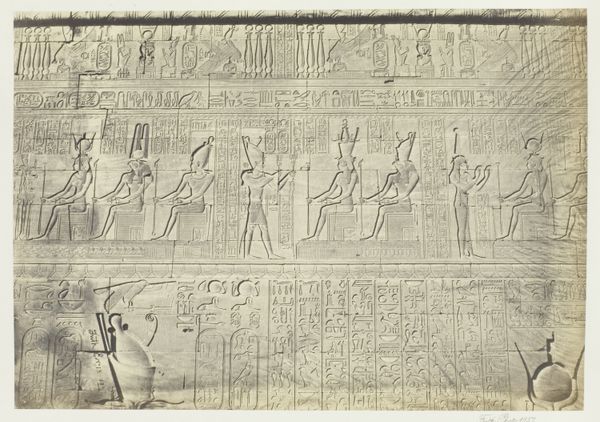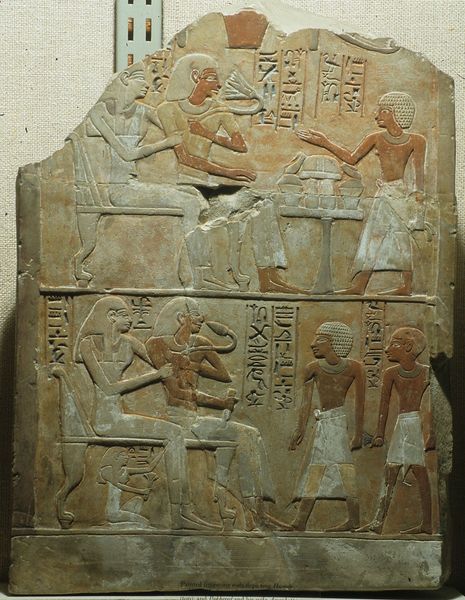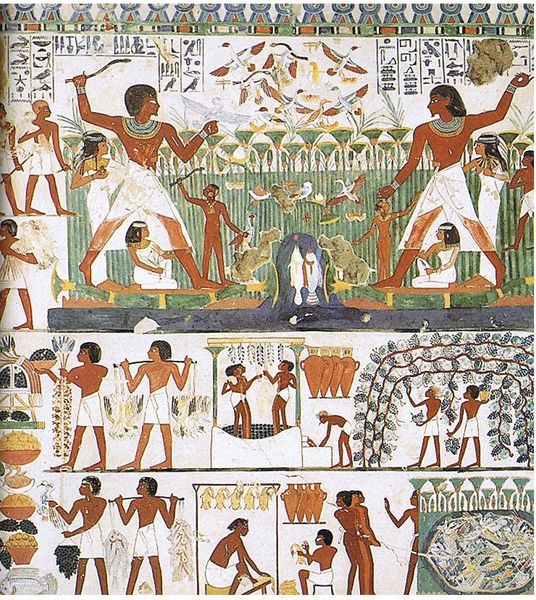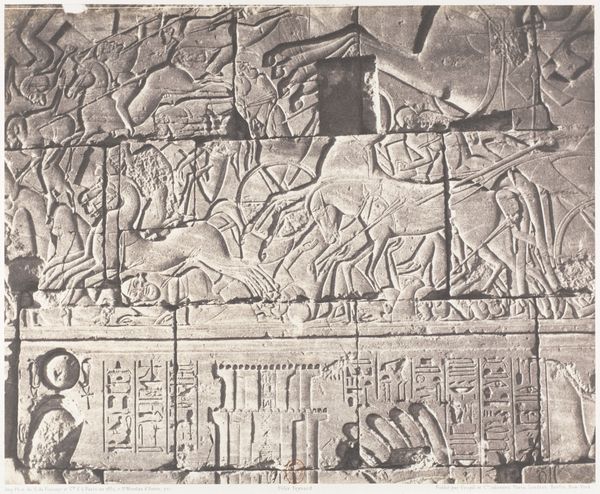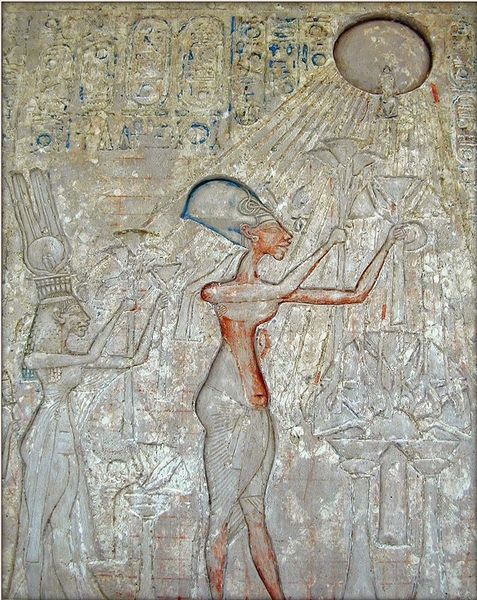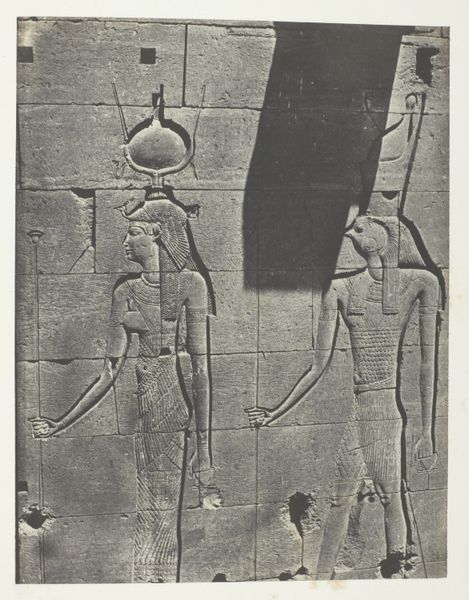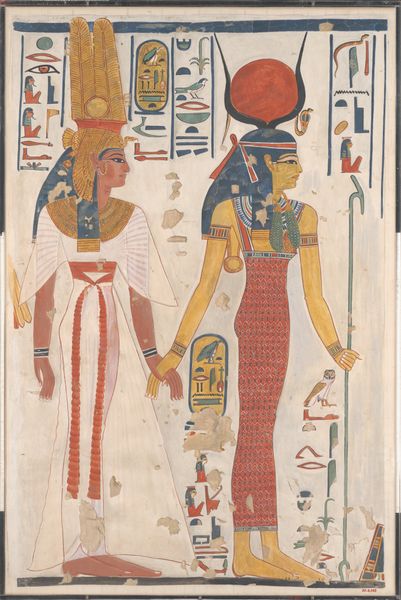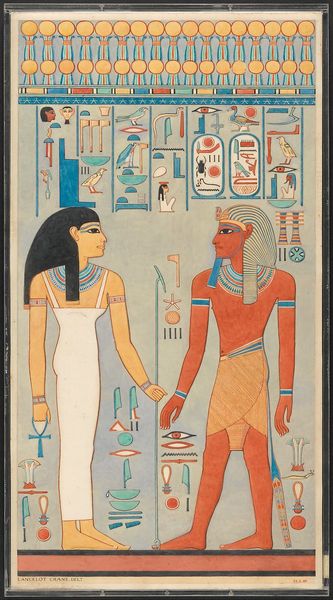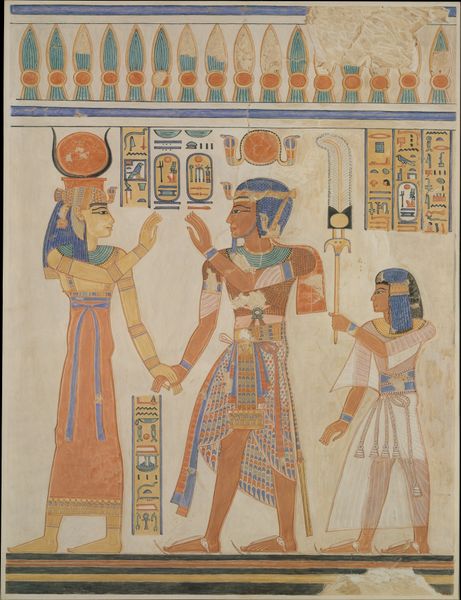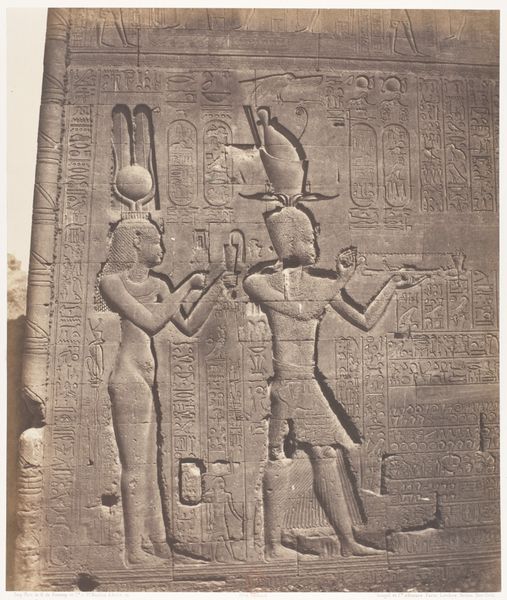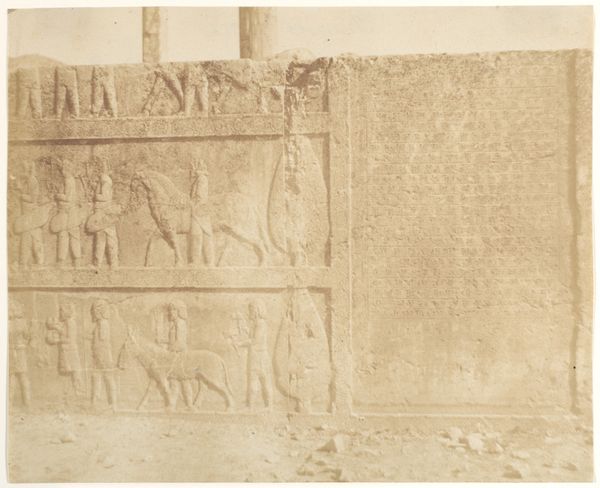
Facsimile of the south side of the sarcophagus of King Haremhab 1295 BC
0:00
0:00
carving, relief, sculpture, marble
#
carving
#
narrative-art
#
relief
#
ancient-egyptian-art
#
figuration
#
ancient-mediterranean
#
sculpture
#
history-painting
#
marble
Dimensions: H. 34 cm (13 3/8 in); w. 65.5 cm (25 13/16 in) Scale ?
Copyright: Public Domain
This is Lancelot Crane's facsimile of the south side of King Haremhab’s sarcophagus, made sometime before the artist’s death in 1918. Crane, working during a time of intense colonial interest in Egypt, offers us a copy of a powerful ruler’s final resting place. The figures carved here speak of identity and belief. We see the winged goddess, Isis, alongside images of Anubis, the jackal-headed god associated with mummification and the afterlife. These images evoke the complex spiritual beliefs that shaped ancient Egyptian society. The hieroglyphs, more than mere decoration, are a language that tells stories of power, divinity, and the journey into the afterlife. Consider how Crane’s work invites us to contemplate the identities of both the ruler, Haremhab, and those who created his sarcophagus. What did it mean to prepare for eternity? How did a society’s understanding of death shape its values and representations of power? Crane’s facsimile, made during a time of European imperialism, encourages us to reflect on the West's fascination with Egyptian culture. It also compels us to think about mortality and the human desire to leave a lasting mark.
Comments
No comments
Be the first to comment and join the conversation on the ultimate creative platform.
